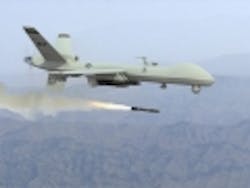Autonomous underwater vehicle technology to monitor environmental conditions in and around Gulf oil spill
CAMBRIDGE, Mass., 27 Aug. 2010. Industry and academia are joining hands to develop autonomous underwater vehicle (AUV) technology for persistent surveillance of marine environmental conditions in the Gulf of Mexico and Atlantic -- particularly in the region of the recent BP oil spill resulting from the 20 April explosion of the BP-leased Deepwater Horizon offshore oil rig.
AUV experts from Bluefin Robotics Corp. in Cambridge, Mass., are working together with Florida Atlantic University (FAU) in Boca Raton, Fla., to develop a research and operations center at FAU's Harbor Branch Oceanographic Institute (HBOI) in Fort Pierce, Fla., to support the Bluefin Spray Glider AUV in establishing an extended field presence in the Atlantic and Gulf of Mexico region for persistent environmental monitoring and data collection.
The Bluefin Spray is a deep-diving, buoyancy-driven unmanned underwater vehicle (UUV) that collects water column data profiles using a pumped oceanographic-grade conductivity-temperature-depth (CTD) sensor and other instruments. The glider manipulates its buoyancy by transferring food-grade mineral oil between its pressure hull and flooded payload compartment and converts vertical buoyancy into forward motion using a pair of wings, which enable the vehicle to glide along a saw-tooth dive profile to depths approaching 5,000 feet. Spray can deploy for as long as six months. Several Spray Gliders are already deployed in the Gulf of Mexico by other oceanographic groups.
"The Spray has the necessary depth and endurance capabilities required to maintain a continuous monitoring presence," says Jeff Smith, director of programs at Bluefin Robotics. For more information contact Bluefin Robotics online at www.bluefinrobotics.com, or the FAU Harbor Branch Oceanographic Institute at www.fau.edu/hboi.
